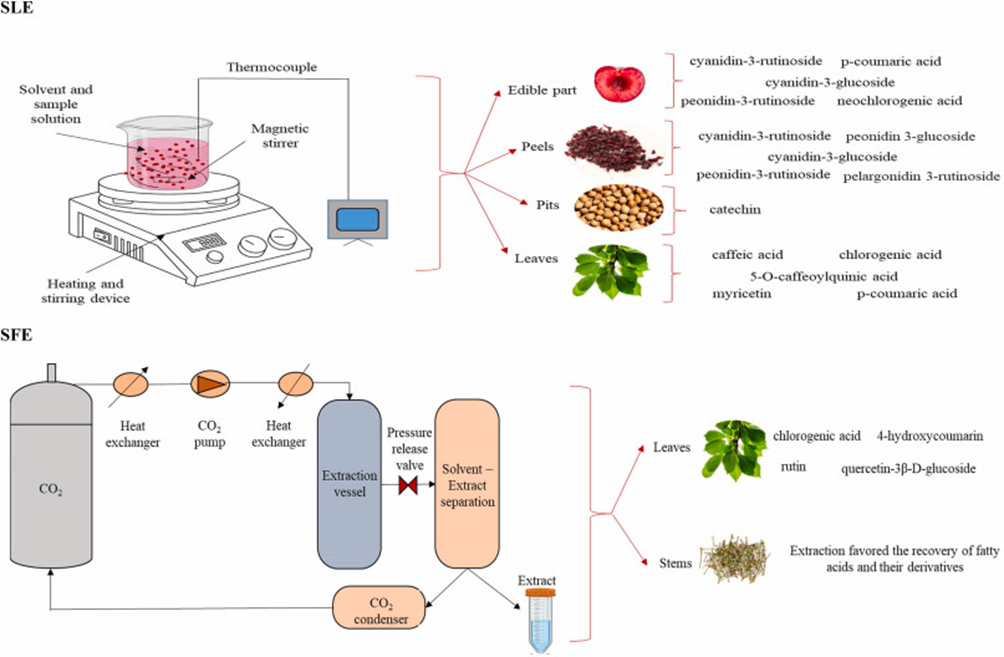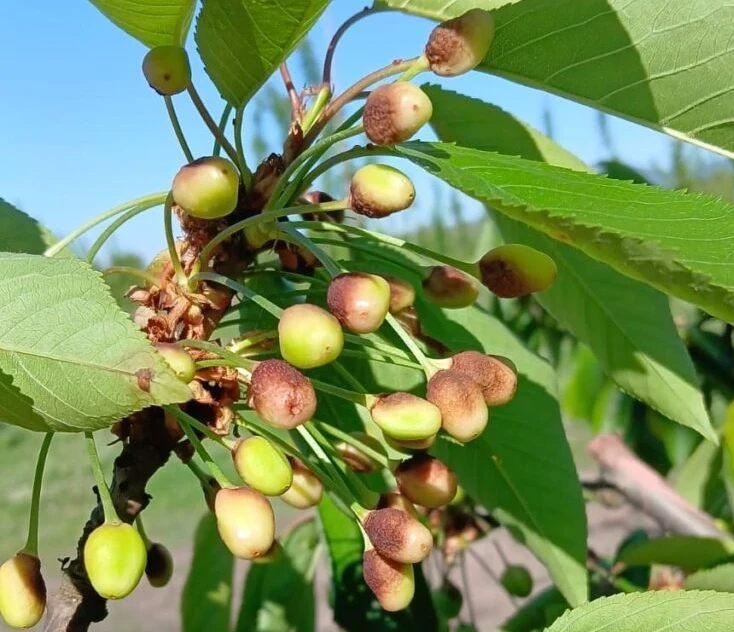Sweet cherry is a non-climacteric stone fruit highly appreciated for its aroma, bright red color, and intense flavor. Globally, production reached 2.6 million tons (2.36 million metric tons) in 2020, with Turkey, United States, Chile, Uzbekistan, and Iran as the leading producers.
Sweet cherries are known for their health benefits due to their high content of phenolic compounds, which exhibit antioxidant, antimicrobial, antidiabetic, and anticancer properties. A recent study from Greece compared various research efforts to analyze the concentration of phenolic components in sweet cherries and their by-products, as well as the extraction techniques used.
Distribution of phenolic compounds
An interesting aspect concerns the distribution of phenolic compounds within the fruit and its by-products. Several studies have shown that sweet cherry fruit extracts contain a high concentration of phenolic acids, while by-products such as stems, pits, and peels exhibit an even higher total phenolic content.
In particular, hydroxycinnamic acids and anthocyanins, such as cyanidin 3-O-rutinoside, are identified as the dominant molecules.
Extraction methods
The extraction of phenolic compounds from sweet cherries and their by-products is carried out using both conventional and non-conventional green methods. Traditional methods include maceration and solvent extraction, which have some limitations, such as the use of large quantities of chemical solvents and long extraction times.
To overcome these issues, more sustainable approaches have been developed in recent years, including ultrasound-assisted extraction, microwave-assisted extraction, enzyme-assisted extraction, pressurized liquid extraction, and supercritical fluid extraction.
These techniques allow for higher extraction yields while reducing environmental impact. Optimizing extraction parameters, such as time, temperature, and solvent type, is crucial to maximizing the recovery of bioactive compounds while maintaining their chemical stability.
 Image 1. Extraction technologies and types of by-products for cherries
Image 1. Extraction technologies and types of by-products for cherries
Industrial applications
Despite the potential of sweet cherry phenolic compounds, their application in the food and cosmetic industries remains limited. However, future prospects indicate growing interest in integrating these extracts into functional products, natural cosmetics, and nutritional supplements.
Due to their antioxidant and antimicrobial properties, these extracts could be used in food preservation, dietary supplements, and cosmetics with skin anti-aging effects. Additionally, some studies suggest that incorporating sweet cherry phenolic extracts into food packaging materials could extend food shelf life through the controlled release of phenolic compounds.
Moreover, phenolic extracts have recently gained significant attention in the pharmaceutical, nutraceutical, and functional food industries. Sweet cherry phenolic extracts could be utilized to develop products aimed at preventing chronic diseases.
Sustainability and value enhancement
Enhancing the value of sweet cherries and their by-products could represent an important opportunity to reduce waste in the agri-food industry while promoting the production of high-value natural ingredients. The suggested approach is to fully utilize the fruit and its parts, maximizing the extraction of active compounds and their application across different industrial sectors.
Future research should focus on optimizing extraction processes and standardizing the use of phenolic compounds in various applications to ensure safe and effective products. Furthermore, the implementation of green technologies for processing by-products could improve the overall sustainability of the sweet cherry production chain.
Photo credit: Chezanoglou et al., 2024; SL Fruit Service
Source: Chezanoglou, E., Mourtzinos, I., C Goula, A. M. (2024). Sweet cherry and its by-products as sources of valuable phenolic compounds. Trends in Food Science & Technology, 104367.
https://doi.org/10.1016/j.tifs.2024.104367
Andrea Giovannini
University of Bologna (IT)
Cherry Times - All rights reserved











